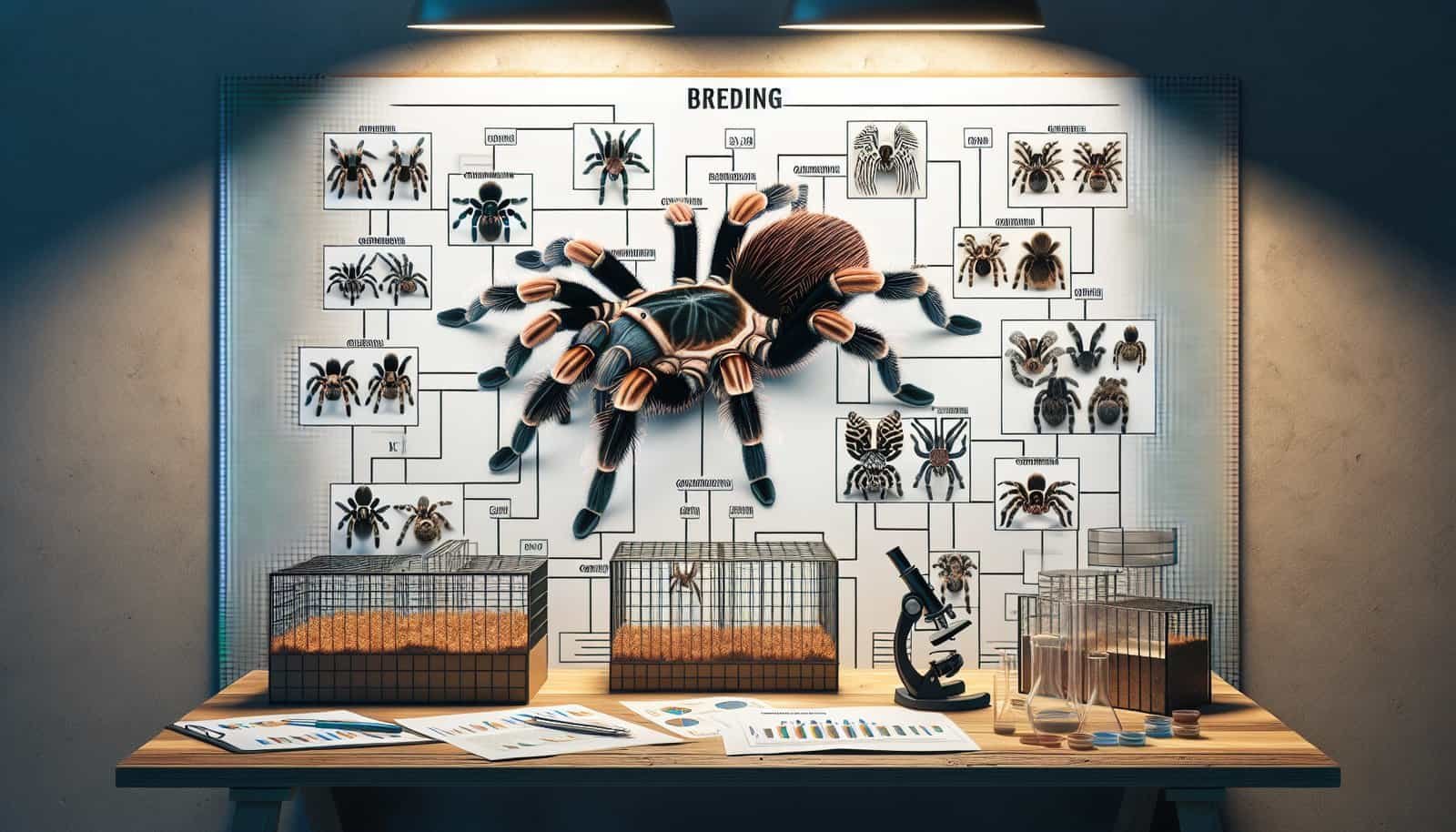Breeding tarantulas may seem like a daunting task, but understanding the genetic considerations can make the process smoother and more successful. When it comes to breeding these fascinating creatures, it’s crucial to have a basic understanding of genetic principles. By considering factors such as genetic diversity, health, and desired traits, you can ensure the production of healthy and robust offspring. So, let’s explore the genetic considerations that play a vital role when breeding tarantulas.
Genetic Considerations When Breeding Tarantulas
Breeding tarantulas can be an exciting endeavor for arachnid enthusiasts, but it is important to take genetic considerations into account to ensure the health and quality of the offspring. By understanding the significance of genetic diversity, potential issues with inbreeding and linebreeding, suitable mating strategies, maintaining healthy breeding stock, identifying and selecting breeding pairs, genetic testing and screening methods, genetic disorders and diseases, genetic variation and phenotypic traits, and considerations for hybrid breeding, you can contribute to the success and well-being of your tarantula breeding program.
Importance of Genetic Considerations
Genetic considerations play a crucial role in tarantula breeding. Just like any other organisms, tarantulas possess a wide range of genetic variations that influence their physical traits, behaviors, and overall health. By carefully considering genetic factors, you can aim to produce tarantulas with strong immune systems, desirable traits, and overall vitality.
Genetic Diversity
Maintaining genetic diversity within a breeding population is vital for the long-term health and vigor of tarantulas. Introducing new bloodlines and avoiding excessive inbreeding helps to prevent the accumulation of genetic defects and increases the chance of producing robust and genetically diverse offspring. By incorporating tarantulas from different geographical regions or even different species, breeders can ensure a healthy gene pool within their breeding program.

Inbreeding and Linebreeding
While genetic diversity is important, excessive inbreeding can have detrimental effects on tarantulas. Inbreeding occurs when closely related individuals are mated, leading to a higher chance of genetic disorders and decreased fertility due to the accumulation of harmful recessive genes. Linebreeding, which involves breeding individuals from a common ancestry, can be used more selectively to preserve desirable traits while minimizing the risks associated with inbreeding. It is crucial for breeders to strike a balance between maintaining genetic diversity and avoiding excessive inbreeding to promote the overall health of their tarantula population.
Mating Strategies
Choosing the appropriate mating strategy is an important consideration when breeding tarantulas. One common strategy is known as “one-to-one” mating, where a single male is introduced to a single female. This allows for natural selection to take place and ensures that the offspring inherit a mix of genetic traits from both parents. Another strategy is “multi-male” mating, where multiple males are introduced to a single female. This approach increases the chances of fertilization and genetic diversity but can also lead to increased competition and aggression among the males. Each strategy has its advantages and disadvantages, and it is crucial to understand and carefully select the most suitable approach for your breeding program.

Maintaining Healthy Breeding Stock
To ensure the success of your tarantula breeding program, it is crucial to maintain healthy breeding stock. Regular health checks, proper nutrition, and a suitable environment are essential to promote the overall well-being of your tarantulas. Monitoring for signs of stress, disease, or genetic abnormalities is essential to prevent the transmission of potential issues to the offspring. Providing a balanced diet, appropriate housing, and minimizing stressors, such as temperature fluctuations or overcrowding, will help ensure that your breeding stock remains healthy and productive.
Genetic Disorders and Diseases
Tarantulas, like any living organism, can be susceptible to genetic disorders and diseases. These conditions can be inherited and passed down to future generations if not properly managed. It is crucial to be aware of common genetic disorders or diseases that affect tarantulas and take appropriate measures to prevent their occurrence or spread. Regular veterinary check-ups, ongoing genetic testing, and responsible breeding practices can help minimize the risk of genetic disorders and ensure the well-being of the tarantulas in your breeding program.

Identification and Selection of Breeding Pairs
Choosing the right breeding pairs is a critical step in tarantula breeding. It is important to consider factors such as genetic compatibility, physical characteristics, temperament, and overall health when selecting breeding pairs. By selecting individuals that complement each other genetically and have desirable traits, you can increase the chances of producing offspring with the desired characteristics. Moreover, understanding the genetic background and lineage of potential breeding pairs can help avoid potential pitfalls associated with excessive inbreeding or the introduction of genetic disorders.
Genetic Testing and Screening Methods
Advancements in genetic testing and screening methods have provided valuable tools for tarantula breeders. These techniques can help identify carriers of genetic disorders or diseases, assess the genetic diversity within a population, and provide insights into potential phenotypic traits of the offspring. Genetic testing can be conducted through various methods, such as DNA analysis or karyotyping, and can offer invaluable information to make informed breeding decisions and ensure the long-term health and viability of your tarantula breeding program.

Genetic Variation and Phenotypic Traits
Genetic variation is the foundation for the wide range of phenotypic traits observed in tarantulas. By understanding the relationship between genetic variation and physical characteristics, breeders can select breeding pairs that are more likely to produce desirable traits in their offspring. Phenotypic traits, such as coloration, patterns, size, and temperament, can be influenced by a combination of genetic and environmental factors. By selectively breeding individuals with specific phenotypic traits, breeders can create unique varieties of tarantulas that cater to different market preferences or personal interests.
Considerations for Hybrid Breeding
Hybrid breeding involves crossing individuals from different species or subspecies, resulting in offspring that possess a mix of genetic traits. While hybrid breeding can yield unique and desirable characteristics, it is essential to approach it with caution. Considerations such as maintaining the purity of original species, avoiding potential negative effects on genetic diversity, and ensuring the long-term health of the offspring should be taken into account. Additionally, it is crucial to evaluate the demand and market acceptance for hybrid tarantulas before investing in a hybrid breeding program.
Breeding tarantulas is a complex and rewarding undertaking that requires careful consideration of various genetic factors. By prioritizing genetic diversity, avoiding excessive inbreeding, selecting appropriate mating strategies, maintaining healthy breeding stock, identifying and selecting suitable breeding pairs, utilizing genetic testing and screening methods, understanding genetic disorders and diseases, recognizing the significance of genetic variation and phenotypic traits, and responsibly approaching hybrid breeding, you can contribute to the thriving and successful world of tarantula breeding.

